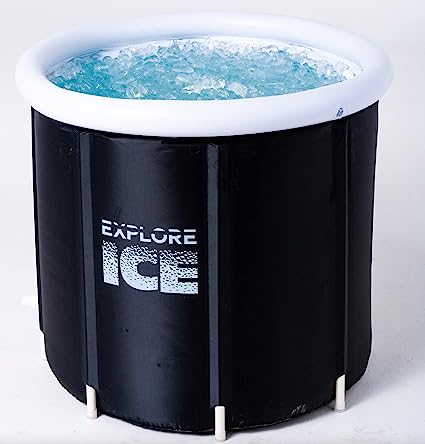Ice baths have become a popular recovery method for athletes and fitness enthusiasts. The extremely cold temperature is said to reduce inflammation, alleviate muscle soreness, and speed up the recovery process. However, there are also potential dangers associated with ice baths that are often overlooked. In this article, we’ll explore the potential risks of ice baths and why caution should be exercised when using them.
Hypothermia
Hypothermia is a condition where the body’s core temperature drops below the normal range. Prolonged exposure to cold temperatures, such as those experienced in an ice bath, can lead to hypothermia. Symptoms of hypothermia include shivering, confusion, slurred speech, and loss of coordination. In severe cases, hypothermia can be life-threatening.
Skin Damage
Exposure to cold temperatures can also damage the skin. Frostbite is a condition where the skin and underlying tissues freeze, resulting in the formation of ice crystals. This can cause permanent damage to the skin and underlying tissues. Even if the skin does not freeze, prolonged exposure to cold temperatures can cause skin irritation and redness.
Cardiovascular Issues
Exposure to cold temperatures can cause the blood vessels to constrict, which can lead to a temporary increase in blood pressure. This can be dangerous for people with cardiovascular issues, such as high blood pressure or heart disease. In some cases, exposure to cold temperatures can trigger a heart attack or stroke.
Respiratory Issues
Breathing in cold air can also cause respiratory issues, such as bronchospasm. This is a condition where the air passages narrow, making it difficult to breathe. People with asthma or other respiratory conditions may be more susceptible to bronchospasm when exposed to cold temperatures.
Infection
Ice baths are often shared between multiple people, which can increase the risk of infection. Prolonged exposure to cold temperatures can also weaken the immune system, making it more difficult to fight off infections. People with open wounds or compromised immune systems should avoid ice baths altogether.
Alternatives to Ice Baths
Despite the potential risks associated with ice baths, there are still many safe and effective ways to aid in muscle recovery. Contrast water therapy, where athletes alternate between hot and cold water immersion, has been shown to reduce muscle soreness and improve recovery time. Massage, stretching, and foam rolling are also effective recovery methods that do not pose the same risks as ice baths.
Ice baths may be a popular recovery method, but caution should be exercised when using them. The potential risks, including hypothermia, skin damage, cardiovascular issues, respiratory issues, and infection, should not be ignored. Alternatives to ice baths, such as contrast water therapy, massage, stretching, and foam rolling, can be just as effective without posing the same risks. It’s important to prioritize safety when it comes to recovery methods and to consult with a medical professional before trying any new techniques.

